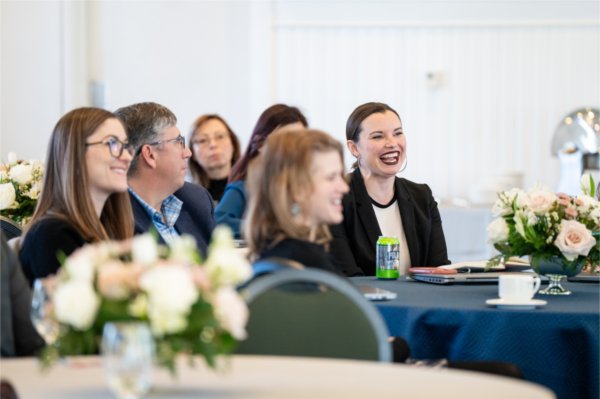Ruiter, who mentioned his niece is a Grand Valley
graduate, credited the work of university administrators, faculty
and staff
.
“I can't speak on behalf of anyone here, but I would
feel like there was, there is no doubt, some sense of loss as to
where we were in 2019,” Ruiter said. “And yet, I see your university
is growing. You're outperforming your peers. You really are growing
and diversifying your student population.”
At UCSD’s Teaching and Learning Commons, Ruiter said he
and his staff saw firsthand how students adapted. In the year prior
to the pandemic, his staff provided academic support services across
51,000 student appointments. That number jumped to 200,000 student
appointments per year since the pandemic’s end, Ruiter said.
“
We've seen the students shifting from content tutoring
to learning strategies,” Ruiter said. “That's telling us that
they're seeking what they need to be successful. Our content
tutoring services are going down, and our learning strategy
services, including supplemental instruction, are going up.”
Mantella concurred that Ruiter’s example was a profound
example for higher education institutions in finding what strategies
best connected with their students.
“That’s an interesting depiction of finding the
importance of learning strategies, particularly as it relates to a
lifetime of learning,” Mantella said. “It becomes an opportunity
found in many ways if we lean in to support the work of academic
confidence, build learning strategies and build in our work effort overall.”
Ruiter added that public higher education’s early
origins were to create more access for people throughout the young
nation, and thereby elevate the economic and ethical levels of the
people in the region — a model that current institutions should emulate.
“
Once upon a time in America, higher education was
almost entirely private and was very white, very male and very
privileged,” Ruiter said. “The belief was that by raising the
intellectual level of the populace, region by region, the nation
might also raise the economic and the ethical levels of the peoples
and regions of the country.
“That was the idea which gives us a lot to reflect on
and consider as we attempt to uphold those values and improve on how
we enact them in our time in all its complexity.
”












